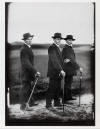


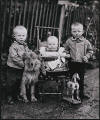
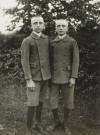
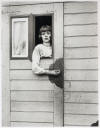
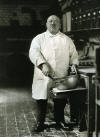
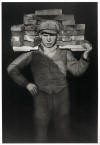 August Sander
August SanderPhotographers
Though it was never fully realized or adequately understood, August Sanderís Menschen des 20 Jahrhunderts (People of the 20th Century) was intended as a comprehensive photographic index of the German population, classified into seven groups by social ďtypeĒ: the Farmer; the Skilled Tradesman; the Woman; Classes and Professions; the Artists; the City; and the Last People.
The Nazis confiscated his first publication of the work, but 1800 portraits made mostly in the 1920s and 1930s survive as well as Sanderís notes and plans for the project, which provided the basis for its reconstruction in book and exhibition form by the August Sander Archiv in Cologne.
The uncompromising directness of Sanderís incisive portraits continues to influence artists today.
"His best photographs are unusually dense -- not in the sense of being over-burdened or obscure, but in the sense of being filled with an unusual amount of substance per square inch. And all this substance becomes the stuff of the life of the subject. Take the famous portrait of Mr. Bennett from Vermont, New England. His jacket, his shirt, the stubble on his chin, the timber of the house behind, the air around him become in this image the face of his life, of which his actual facial expression is the concentrated spirit. It is the whole photograph, frowning, which surveys us.
"A Mexican woman sits against a wall. She has a woollen shawl over her head and shoulders and a broken plaited basket on her lap. Her skirt is patched and the wall behind her very shabby. The only fresh surface in the picture is that of her face. Once again, the surfaces we read with our eyes become the actual chafing texture of her daily life; once again the photograph is a panel of her being. At first sight the image is soberly materialist, but just as her body wears through her clothes and the load in the basket wears away the basket, and passers-by have rubbed off the surface of the wall, so her being as a woman (her own existence for herself) begins, as one goes on looking at the picture, to rub through the materialism of the image. "
John Berger